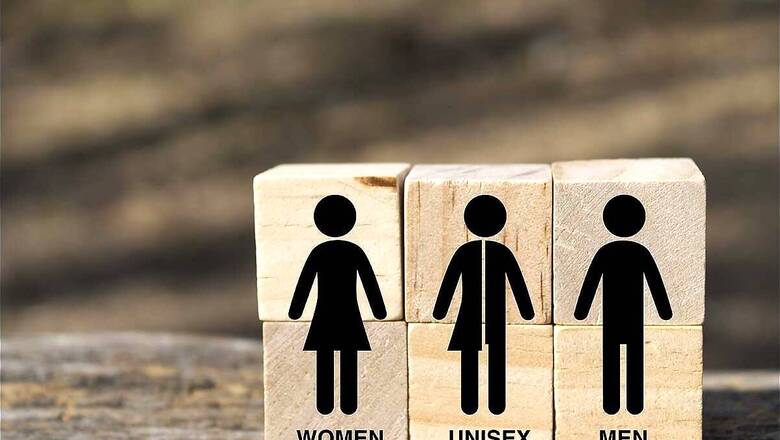
views
According to the United States Interagency Council on Homelessness, it is estimated that approximately 20 to 40 percent of youth experiencing homelessness self-identify as LGBTQ+. This is disproportionate to the percentage of LGBTQ+ youth in the general youth population. Furthermore, they have acknowledged that LGBTQ+ youth are at a 120% greater risk of homelessness than heterosexual youth. That is an alarming statistic. It is also likely to be mirrored in India, but since Indian data on homelessness itself might be difficult to find, it is difficult to estimate how many LGBTQ people are homeless.
For LGBTQ individuals, their identity itself becomes the reason for their homelessness. In countries like India, sexuality remains a taboo topic in everyday conversations within families. Thus, there is a lower likelihood that a person will come out at an early age (or at all) to their family. This allows individuals living in favourable economic conditions to continue enjoying their privileges until they become self-reliant. However, for transgender individuals who are perceived as effeminate, and intersex people whose appearance may out them, persecution begins early, often compelling them to leave their homes.
Therefore, it is more likely in India that transgender and intersex people end up being homeless more than lesbian or gay people: simply because sexuality isn’t openly discussed at home, and therefore it is less likely for a lesbian or gay person to be recognized as lesbian or gay by their family. Unfortunately in India, the streets are a highly dangerous place for transgender and intersex individuals.
Accessing toilets is more than a mere physical necessity for homeless LGBTQ+ individuals in India. It is a symbol of human dignity and essential for maintaining good health. This article examines the unique challenges faced by this community in accessing toilets and proposes practical and compassionate solutions that can bring transformative change to their lives.
LGBTQ+ Community’s Ongoing Challenges with Toilet Access
These individuals encounter numerous barriers when it comes to accessing toilets.
Gender-segregated toilets
Most public toilets are segregated by gender, which poses a problem for transgender and non-binary individuals who do not conform to the binary categories of male and female. They often face harassment, abuse, or denial of entry from toilet staff or other users who question their gender identity or expression. Sometimes, these incidents escalate to physical violence. Some transgender individuals resort to using disabled toilets or open spaces, which again compromises their safety and privacy.
Stigma and violence
Homeless LGBTQ+ individuals also face stigma and violence from society at large, which affects their access to toilets. They are often stereotyped as immoral, diseased, or criminal, and face discrimination in housing, employment, education, and health care. They are also vulnerable to physical and sexual violence from vigilante groups, or other hostile elements. As a result, many homeless LGBTQ+ individuals avoid using public toilets or limit their water intake to reduce their need to urinate.
These challenges have serious consequences for the health and well-being of homeless LGBTQ+ individuals. They can lead to dehydration, urinary tract infections, kidney problems, skin infections, mental stress, and low self-esteem. They can also prevent them from accessing other essential services or participating in social activities.
How can we address these challenges?
There are a number of supportive solutions that can ensure toilet access for homeless LGBTQ+ individuals:
Community resources
One of the most effective ways to ensure toilet access for homeless LGBTQ+ individuals is to create community resources that cater to their specific needs. These can include community toilets that are inclusive of all genders and sexualities, community centres that provide safe spaces and basic amenities for homeless LGBTQ+ individuals, and community networks that offer peer support and advocacy. Such resources can be created by collaborating with local NGOs, activists, and allies who work with the LGBTQ+ community.
Safe shelter facilities
To ensure toilet access for homeless LGBTQ+ individuals, we must provide them with safe shelter facilities that offer them protection and dignity. These can include shelters that are exclusively for LGBTQ+ people or that have separate sections for them, shelters that have adequate and accessible toilets for all genders and sexualities, and shelters that have supportive staff and services that cater to the needs of LGBTQ+ residents. Such facilities can be established by partnering with existing shelters or by creating new ones with the help of donors and sponsors.
Outreach programs
Another way to ensure toilet access for homeless LGBTQ+ individuals is to conduct outreach programs that raise awareness and sensitise the public about their issues. These can include campaigns that educate the public about the rights and realities of LGBTQ+ people, workshops that train toilet staff and other service providers on how to be respectful and inclusive of LGBTQ+ users, and dialogues that engage with policymakers and authorities on how to improve the infrastructure and policies related to public toilets.
India’s Path to Greater Inclusivity
Both the government and corporate India have taken up the mantle of change, including the leading brand in the lavatory care segment, Harpic. With a genuine understanding and an open-hearted approach, Harpic has made significant strides in ensuring its products cater to the diverse fabric of society, including the LGBTQ+ community. Recognising the transformative power of education in shaping attitudes, Harpic has launched inspiring campaigns that shed light on the various gender identities that exist. These impactful initiatives serve to awaken and nurture society, fostering an environment of acceptance.
One noteworthy collaboration between Harpic and News18, known as ‘Mission Swachhta aur Paani,’ goes beyond the concept of cleanliness alone. It is a movement that acknowledges the profound importance of toilets, viewing them not just as functional spaces, but as symbols of safety and inclusivity for marginalised individuals. This exceptional mission is founded on the belief that clean and inclusive toilets are essential for building a society that unconditionally embraces and empowers everyone. With unwavering dedication, Harpic and News18 actively include and advocate for the LGBTQ+ community, spreading the message that every individual deserves access to safe and accepting spaces where their dignity is respected, and their presence is warmly embraced.
Mission Swachhta aur Paani provides a platform for issues of importance, by bringing together the right set of stakeholders – policy makers, doctors, Govt officials, NGOs, activists, celebrities, and of course, responsible members of corporate India. By bringing together these minds and the resources they bring, Mission Swachhta aur Paani is aiming to create real change in India – particularly when it relates to access to clean and safe toilets for all.
For homeless LGBTQ+ individuals, access to a clean and safe toilet makes an oversized contribution to their well-being. It drastically improves their quality of life, and it affords them dignity. When we create a more inclusive and compassionate society that respects the needs of every single one of us, is when we truly become a civilised society.
Join us here, to participate in this national transformation.




















Comments
0 comment